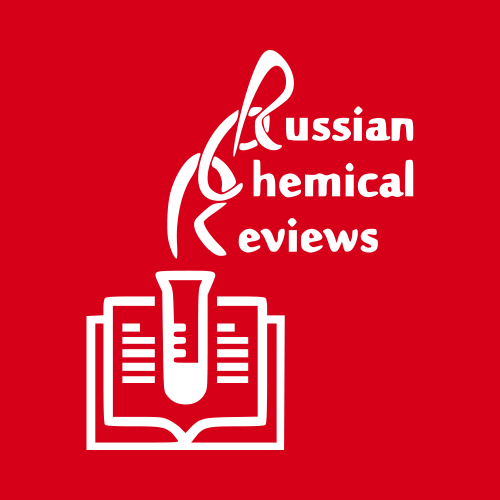Mode of action of the novel phenazine anticancer agents XR11576 and XR5944
Publication type: Journal Article
Publication date: 2006-12-08
scimago Q3
wos Q3
SJR: 0.532
CiteScore: 4.1
Impact factor: 2.2
ISSN: 09594973, 14735741
PubMed ID:
17159600
Cancer Research
Oncology
Pharmacology
Pharmacology (medical)
Abstract
The substituted phenazines XR11576 and XR5944 were originally described as dual topoisomerase-I/II poisons. Subsequent reports, however, indicated that the association of their cytotoxicity with cellular topoisomerases was not clear. We set out to study this further using human tumour cell lines, PEO1 ovarian cancer, MDA-MB-231 breast cancer and variants with acquired resistance to VP-16 and XR11576: PEO1VPR, MB-231VPR, MB-231-11576R and camptothecin: PEO1CamR. Cytotoxicity testing [3-(4,5-dimethylthiazol-2yl)-2,5-diphenyl tetrazolium bromide assay], DNA-protein crosslink formation, cell cycle analysis (flow cytometry) for DNA content, apoptosis (flow cytometry) for Annexin V and Western blotting for apoptotic factors. Cytotoxicity testing showed potent cytotoxicity with no cross-resistance to XR11576 or XR5944 in VP-16 or camptothecin-resistant lines. Importantly, we have shown for the first time that the activities of XR5944 and XR11576 are similar as MB-231-11576R cells were resistant to both agents and to a similar extent. XR5944 showed the greatest, albeit slower, interaction with DNA with high levels of DNA-protein crosslinks. Levels of apoptosis in XR5944-treated cells were significantly less than those in VP-16 or XR11576 treatments, suggestive of a more cytostatic rather than cytotoxic mode of action. Interestingly, XR5944 failed to give rise to a G2/M blockade, in contrast to VP-16 or XR11576. XR5944 and XR11576, in line with a dual topoisomerase-I/II-directed mechanism of action, retain potent activity in tumour cells with acquired resistance to VP-16 and camptothecin. Although these agents appear to behave differently from each other according to experimental conditions, this study suggests a substantial overlap in their mechanism(s) of action.
Found
Nothing found, try to update filter.
Found
Nothing found, try to update filter.
Top-30
Journals
|
1
2
|
|
|
Dalton Transactions
2 publications, 11.11%
|
|
|
Molecules
1 publication, 5.56%
|
|
|
Cancer Chemotherapy and Pharmacology
1 publication, 5.56%
|
|
|
Cancer Treatment Reviews
1 publication, 5.56%
|
|
|
European Journal of Medicinal Chemistry
1 publication, 5.56%
|
|
|
Chemosphere
1 publication, 5.56%
|
|
|
ChemMedChem
1 publication, 5.56%
|
|
|
ChemistrySelect
1 publication, 5.56%
|
|
|
Advanced Synthesis and Catalysis
1 publication, 5.56%
|
|
|
Helvetica Chimica Acta
1 publication, 5.56%
|
|
|
Organic and Biomolecular Chemistry
1 publication, 5.56%
|
|
|
Biocatalysis and Agricultural Biotechnology
1 publication, 5.56%
|
|
|
Polycyclic Aromatic Compounds
1 publication, 5.56%
|
|
|
Cancer Drug Discovery and Development
1 publication, 5.56%
|
|
|
Russian Chemical Reviews
1 publication, 5.56%
|
|
|
1
2
|
Publishers
|
1
2
3
4
5
|
|
|
Elsevier
5 publications, 27.78%
|
|
|
Wiley
4 publications, 22.22%
|
|
|
Royal Society of Chemistry (RSC)
3 publications, 16.67%
|
|
|
Springer Nature
2 publications, 11.11%
|
|
|
MDPI
1 publication, 5.56%
|
|
|
Taylor & Francis
1 publication, 5.56%
|
|
|
Autonomous Non-profit Organization Editorial Board of the journal Uspekhi Khimii
1 publication, 5.56%
|
|
|
1
2
3
4
5
|
- We do not take into account publications without a DOI.
- Statistics recalculated weekly.
Are you a researcher?
Create a profile to get free access to personal recommendations for colleagues and new articles.
Metrics
18
Total citations:
18
Citations from 2024:
1
(5.56%)
Cite this
GOST |
RIS |
BibTex |
MLA
Cite this
GOST
Copy
Lewis L. J. et al. Mode of action of the novel phenazine anticancer agents XR11576 and XR5944 // Anti-Cancer Drugs. 2006. Vol. 18. No. 2. pp. 139-148.
GOST all authors (up to 50)
Copy
Lewis L. J. Mode of action of the novel phenazine anticancer agents XR11576 and XR5944 // Anti-Cancer Drugs. 2006. Vol. 18. No. 2. pp. 139-148.
Cite this
RIS
Copy
TY - JOUR
DO - 10.1097/cad.0b013e328010772f
UR - https://doi.org/10.1097/cad.0b013e328010772f
TI - Mode of action of the novel phenazine anticancer agents XR11576 and XR5944
T2 - Anti-Cancer Drugs
AU - Lewis, Louisa J.
PY - 2006
DA - 2006/12/08
PB - Ovid Technologies (Wolters Kluwer Health)
SP - 139-148
IS - 2
VL - 18
PMID - 17159600
SN - 0959-4973
SN - 1473-5741
ER -
Cite this
BibTex (up to 50 authors)
Copy
@article{2006_Lewis,
author = {Louisa J. Lewis},
title = {Mode of action of the novel phenazine anticancer agents XR11576 and XR5944},
journal = {Anti-Cancer Drugs},
year = {2006},
volume = {18},
publisher = {Ovid Technologies (Wolters Kluwer Health)},
month = {dec},
url = {https://doi.org/10.1097/cad.0b013e328010772f},
number = {2},
pages = {139--148},
doi = {10.1097/cad.0b013e328010772f}
}
Cite this
MLA
Copy
Lewis, Louisa J., et al. “Mode of action of the novel phenazine anticancer agents XR11576 and XR5944.” Anti-Cancer Drugs, vol. 18, no. 2, Dec. 2006, pp. 139-148. https://doi.org/10.1097/cad.0b013e328010772f.









